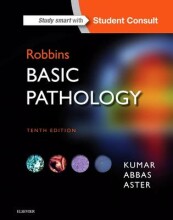Cell injury, Cell Death and Adaptations - Mechanisms of cell injury and cell death
8 important questions on Cell injury, Cell Death and Adaptations - Mechanisms of cell injury and cell death
During hypoxia, the cell can activate compensatory mechanisms which consit of transcription factors and growth factor. Name one of each.
TF: HIF-1 simulates the synthesis of several proteins that help the cell to survive in the face of low oxygen. Some of these proteins, such as vascular endothelial growth factor (VEGF), stimulate the growth of new vessels and thus attempt to increase blood flow
and the supply of oxygen.
Persistent or severe hypoxia and ischemia ultimately lead to failure of ATP generation and depletion of ATP in cells. What is the consequence of this on the ATP-dependent sodium pumps?
Reduced activity of plasma membrane ATP-dependent sodium pumps, resulting in intracellular accumulation of sodium and efflux of potassium. The net gain of solute is accompanied by isoosmotic gain of water, causing cell swelling and dilation of the ER.
What is Oxidative Stress and which molecules induce this?
Oxidative stress refers to cellular abnormalities that are
induced by ROS, which belong to a group of molecules
known as free radicals.
- Higher grades + faster learning
- Never study anything twice
- 100% sure, 100% understanding
When does ROS become pathogenic?
ROS is also produced by phagocytic leukocytes. Which types and what is the function of the produced ROS in normal situations?
mainly neutrophils and macrophages. ROS functions as a weapon to destroy destroying ingested microbes and other substances during inflammation and host defense
Name the free radical scavengers
2. Glutathione (GSH) peroxidases
3. Catalase
4. Endogenous or exogenous anti-oxidants (e.g., vitamins E,
A, and C and β-carotene)
If there is Mild ER stress, the cell can induce a protective cellular response that is called the adaptive unfolded protein response. Describe how this reduces the load of misfolded proteins
This adaptive response activates signaling pathways that increase the production of chaperones, decrease protein synthesis, and increases protein degradation. This reduces the levels of misfolded proteins in the cell.
Describe the unfolded protein response when the cell has severe ER stress
The question on the page originate from the summary of the following study material:
- A unique study and practice tool
- Never study anything twice again
- Get the grades you hope for
- 100% sure, 100% understanding
































